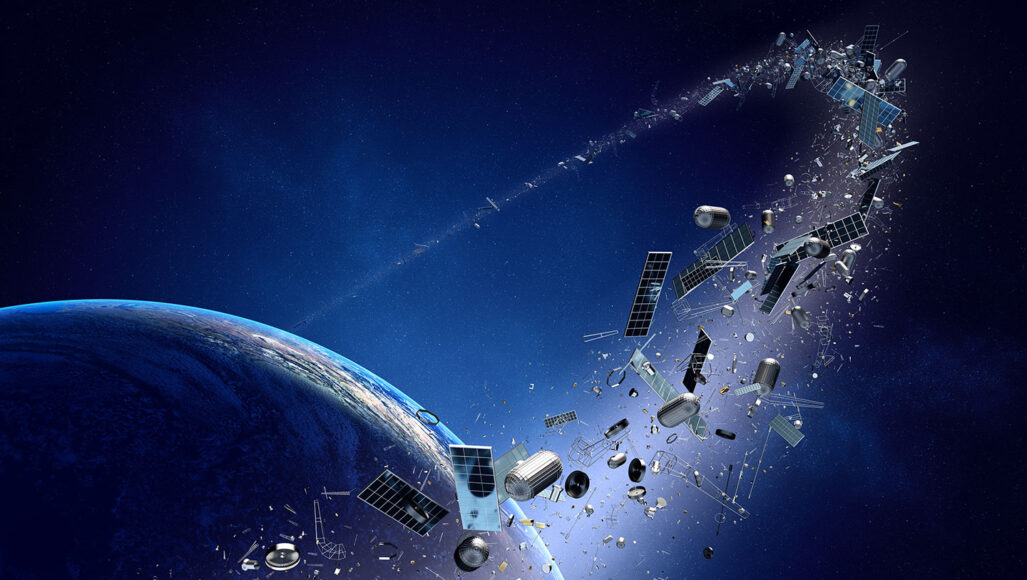Space trash could kill satellites, space stations — and astronauts

Seven astronauts aboard the International Space Station woke to unwelcome news on the morning of November 15, 2021. NASA, the U.S. space agency, was worried. The station was zooming directly into a suddenly dangerous area littered with trash. A collision could damage the spacecraft. And that could threaten the safety of everyone inside. NASA warned the astronauts to take cover.
The astronauts closed hatches between sections of the ISS and climbed into escape ships. Then they waited. Fortunately, they transited the area without a mishap. All clear.
Soon, the source of all that debris would be revealed. Earlier that day, the Russian government had launched a rocket to blow up a big satellite. The satellite hadn’t worked since the 1980s. This launch was testing a new missile technology.
While the missile did its job, the explosion created a “debris field.” The shattered satellite showered space with some 1,500 pieces of trash big enough to see and track by telescope. It also produced hundreds of thousands of smaller pieces. Even a small piece could have ripped a hole through the exterior of the ISS. And the threat from this one satellite may persist for years, if not decades.
Space junk races around the planet at up to 8 kilometers (5 miles) per second. The speed of an impact can reach 15 kilometers per second, or 10 times as fast as a bullet. NASA scientists estimate that a marble-sized piece could smash into another object with as much force as a bowling ball traveling at 483 kilometers (300 miles) per hour.
The ISS passes through the same spot every 93 minutes as it circles the planet. On that mid-November day, everyone aboard feared an impact. But this wasn’t the first or last time space junk had threatened a mission. The explosion prompted NASA to cancel a planned, November 30 spacewalk. The Chinese space station, with three astronauts on board, had to change course because of the Russian satellite. Just three days before the explosion, the ISS changed its orbit to avoid colliding with space junk left by an older, broken-down satellite. And on December 3, the ISS again changed course to avoid pieces from a different broken-down satellite.
Space junk is a growing menace. Indeed, this trash “is now the number one concern of people who study space-traffic management,” says Pat Seitzer. He’s an astronomer at the University of Michigan, in Ann Arbor. He uses telescopes and computers to study orbital debris.
“We created this risk ourselves,” says Don Pollacco. Fortunately, he adds, “there’s stuff we can do to stop it from being a risk.” An astronomer at the University of Warwick in England, Pollacco runs the new Center for Space Domain Awareness. Scientists there focus on the environment in outer space that’s closest to Earth. The debris problem, he warns, threatens the future of space traffic.
“If you don’t deal with it, sooner or later it will catch up,” he says. “You can’t ignore it forever.”
Read more at Science News Explores. Story published March 3, 2022.